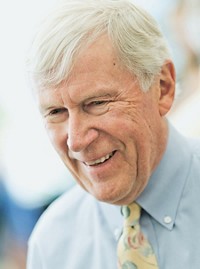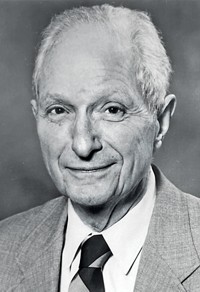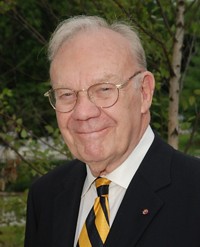Advertisement
Grab your lab coat. Let's get started
Welcome!
Welcome!
Create an account below to get 6 C&EN articles per month, receive newsletters and more - all free.
It seems this is your first time logging in online. Please enter the following information to continue.
As an ACS member you automatically get access to this site. All we need is few more details to create your reading experience.
Not you? Sign in with a different account.
Not you? Sign in with a different account.
ERROR 1
ERROR 1
ERROR 2
ERROR 2
ERROR 2
ERROR 2
ERROR 2
Password and Confirm password must match.
If you have an ACS member number, please enter it here so we can link this account to your membership. (optional)
ERROR 2
ACS values your privacy. By submitting your information, you are gaining access to C&EN and subscribing to our weekly newsletter. We use the information you provide to make your reading experience better, and we will never sell your data to third party members.
People
ACS Award in Inorganic Chemistry
Recipients are honored for contributions of major significance to chemistry
by Alexander H. Tullo
January 21, 2008
| A version of this story appeared in
Volume 86, Issue 3

Sponsored by Aldrich Chemical Co. Inc.
Kenneth N. Raymond, professor of chemistry at the University of California, Berkeley, uses supramolecular structures made by metal-ligand coordination. These provide an interior space to protect guest molecules from their surrounding environments, thus allowing unique chemistry to occur inside the cavities.
For instance, in a recent paper, Raymond, 66, along with UC Berkeley colleague Robert G. Bergman, described acid hydrolysis of orthoformates in a basic solution (Science 2007, 316, 85). "That was pretty amazing," Raymond says. "Acid catalysis at pH 11—and all of this driven because of the clusters."
Colleagues, likewise, are impressed by his work. "His recent accomplishments in symmetry-based design of supramolecular clusters formed with metal-ligand interactions have pioneered a great deal of exciting and new chemistry," says Vincent L. Pecoraro, professor of chemistry at the University of Michigan.
Another chemist notes Raymond's more general impact on his field. "Ken is an intellectual leader and reliable achiever at the forefront of coordination chemistry, a core discipline of inorganic chemistry," says Daryle H. Busch, professor of chemistry at the University of Kansas.
Raymond has been active in several interrelated research areas. "The central theme of my career is metal-ligand specificity of interaction," he explains. "Can you understand how nature does this, first of all? And secondly, can you then design molecules that specifically recognize metal ions?"
Raymond continues to work with sidero??phores, chelating agents used by bacteria to carry iron. This research may have implications for fighting pathogenic bacteria. And his work with siderophores earned him ACS's Alfred Bader Award in Bioinorganic or Bioorganic Chemistry in 1994.
He is also continuing his work on gadolinium complexing agents used for magnetic resonance imaging. He was a consultant in developing Omniscan, an MRI agent widely used today. "I would hope that what may go into the clinic 10 years from now will be compounds we're working on now," he notes.
He credits Richard Hutchens, a teacher at Clackamas High School, near Portland, Ore., for early encouragement in chemistry. "I helped him take reagents and set up things that he needed, and in return, I got the run of the lab," Raymond recalls. "That really turned me into a chemist." In 2002, Raymond received the Vollum Award for Distinguished Accomplishment in Science & Technology from his undergraduate alma mater, Reed College, in Portland. In attendance for his speech were Hutchens and two of his former professors at Reed, Marshall Cronyn and Thomas G. Dunn, now professors emeriti of the chemistry department.
At Reed, Raymond conducted summer research. He also took a year off to hitchhike across Europe. At a summer series on inorganic chemistry hosted by Reed, he attended lectures by the late Fred Basolo, professor of chemistry at Northwestern University. "I was thrilled and excited by his chemistry and decided that was the guy I wanted to do my Ph.D. for, so I went off to Northwestern," he says. He was supervised jointly by the newly arrived James A. Ibers in the structural part of his Ph.D. research.
Basolo arranged interviews for Raymond as he was completing his program, and Raymond was hired at UC Berkeley in 1967, months before receiving his doctorate at Northwestern. At UC Berkeley, he started researching classical coordination chemistry before he became interested in siderophores.
In addition to his appointment at the UC Berkeley chemistry department, Raymond is a senior faculty scientist at Lawrence Berkeley National Laboratory, where he is director of the Seaborg Center, a position he has held since 2002. He is a member of the National Academy of Sciences and is an author of more than 400 papers.
The award address will be presented before the Division of Inorganic Chemistry.





Join the conversation
Contact the reporter
Submit a Letter to the Editor for publication
Engage with us on Twitter